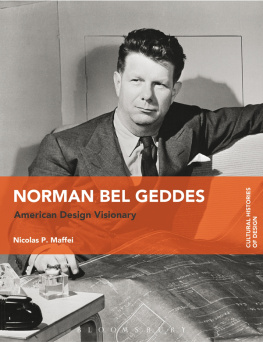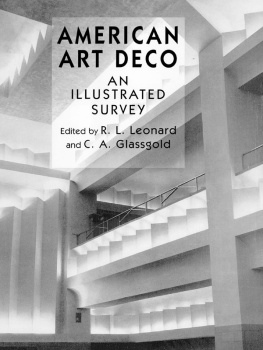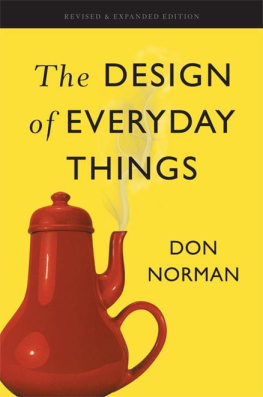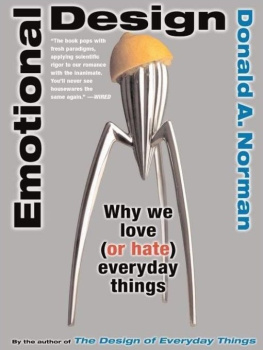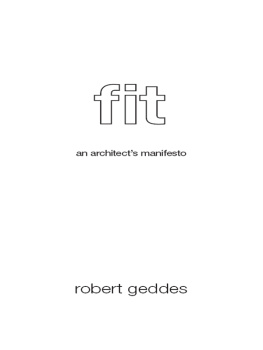Norman Bel Geddes
CULTURAL HISTORIES OF DESIGN
SERIES EDITORS
Grace Lees-Maffei of the University of Hertfordshire, UK and Kjetil Fallan of the University of Oslo, Norway
The Cultural Histories of Design series presents rigorous and original research on the role and significance of design in society and culture, past and present. From a vantage point in the heart of the humanities, the series explores design as the most significant manifestation of modern and contemporary culture.
FORTHCOMING TITLES
Modern Asian Design by D. J. Huppatz of Swinburne University, Australia
Norman Bel Geddes by Nicolas P. Maffei of Norwich University of the Arts, UK
Soviet Critical Design by Tom Cubbin of the University of Gothenburg, Sweden
Open Plan by Jennifer Kaufmann-Buhler of Purdue University, USA
Norman Bel Geddes
American Design Visionary
NICOLAS P. MAFFEI
Bloomsbury Academic
An imprint of Bloomsbury Publishing Plc

Dedicated with love to Grace, Jay, and Laurel for their patience and inspiration.
T his book would not have been possible without the assistance and generosity of numerous individuals and institutions. First, I am thankful to my parents, whose passion, encouragement, and collection of design-related artifacts piqued my initial interest in industrial design history. This fascination was developed and refined at the University of Texas, Austin, where Jeffrey L. Meikle patiently guided my research of the Harry Ransom Centers (HRC) Normal Bel Geddes Papers. My professors and classmates at the University of Delaware, Newark, helped me hone my skills as a historian. The archivists and curators and other staff at the HRC, in particular Rick Watson, Helen Adair, and Kathy Henderson, deserve special thanks for their time and generosity. I am equally appreciative of the support of the many individuals who aided my searches and acquisition of images and permissions, including Christopher M. Leich, Kenneth Hamilton Sather Bruguiere, and those at the Edith Lutyens and Norman Bel Geddes Foundation, the Museum of Modern Art, New York, the New York Public Librarys Department of Rare Books, Special Collections and Preservation at the University of Rochester River Campus Libraries, the Yale University Manuscripts and Archives, the Library of Congress, the Theosophical Society in America, the Austrian Frederick and Lillian Kiesler Private Foundation, Vienna, Fondacion Le Corbusier, Paris, Hearst Communications Inc., Getty Images, and Scala, Florence. I am hugely appreciative of the inspiring tutors and thoughtful colleagues I met while I was a PhD student at the Royal College of Art, London, in particular my supervisors, Penny Sparke and Jeremy Aynsley. I have benefited hugely from those who read drafts of this book, including Jeffrey L. Meikle and Kjetil Fallan. Financial support was provided through the Graham Foundation, Chicago, the Hagley Museum and Library, the Harry Ransom Center, and the Norwich University of the Arts, which also provided essential research leave. The editors at Bloomsbury, Claire Constable and Rebecca Barden, have been unfaltering in their assistance. Finally, I am most grateful to my wife Grace who has provided constant encouragement, loving support, and astute commentary on my research on Bel Geddes.
N orman Bel Geddes (18931958) was perhaps the most influential of Americas first generation of industrial designers, which included Henry Dreyfuss, Raymond Loewy, Walter Dorwin Teague, and Harold Van Doren. Through his grand schemes, immense imagination, and even greater sense of self, Bel Geddes significantly contributed to the development of the industrial design profession, which in turn played a crucial role in Americas transformation to a consumer society. American Design Visionary investigates Bel Geddess startlingly visionary designs of teardrop-shaped cars, trains, and planes, along with his genius for publicity, which helped secure streamlining as the design style of the 1930s and indelibly stamped the industrial design profession as one of unbridled vision and machine-age optimism.
After an illustrious career as a leading practitioner of the New Stagecraft, a European and American avant-garde stage design movement that emphasized visual unity and the mood of a play, Bel Geddes opened one of Americas first industrial design offices in 1927.
This book explores Bel Geddess lifelong effort to present himself as a pragmatic visionary and the attempts of his contemporaries to brand him a genius and a dreamer. Despite Bel Geddess bold creations, unswerving idealism, and inflated ego, Dreyfuss considered him the only authentic genius this [industrial design] profession has ever produced.).
Although many of his visionary designs were never realized, whether futuristic cities or streamlined vehicles, they stimulated the emerging profession more immediately than those of his more pragmatic contemporaries.
American Design Visionary charts Bel Geddess conceptual influences whether aesthetic, ideological, or philosophical, placing him within the shifting intellectual currents of the first half of the twentieth century. Primarily self-educated, Bel Geddes dedicated himself to discovering the secrets of imagination and creativity, resulting in a lifelong commitment to making the imagined ideal into a material realityextending this doctrine of transformation to the self and the world. To this end Bel Geddes maintained an extensive library, exploring a range of intellectual and spiritual ideas, including psychoanalysis, scientific management, Bolshevism, clairvoyance, Theosophy (a religious philosophy based on Eastern thought and mystic concerns), and machine-age proselytizing (popular writing which promoted the machine as the symbol and savior of the era).
The notion that modernity, characterized by rationality, bureaucracy, and science, was disenchanted and thus devoid of wonder and mystery can be traced to Max Webers Die Entzauberung der Welt (1917). Historians now argue that modernity provides a space for both logic and enchantment, the latter surviving in magic shows, mass spectacle, and other phenomena, allowing individuals to experience wonder and delight, even in the midst of modernization.and celebrations of the irrational will. Unearthing interests in clairvoyance, Theosophy, and Christian Science, American Design Visionary evidences Bel Geddess apparently antimodern pursuits.
Daniel Herman argues that spiritualists of the period through spirit knocking, sances, and so on prefigured the electronic technology of spirit materialization in the twentieth centurytelephone, film, radio and television. This in turn aided the development of a twentieth-century modernity, characterized by a therapeutic mass culture. If we can view progress ideologythe belief in civilizations constant improvementas a quasi-religious, technological fundamentalism, then Bel Geddess designs, whether manifested in aesthetic streamlining or a faith in futuristic visions, can be seen as attempts to reenchant modernity. Whereas the spirit medium allowed sance-goers to access a parallel world of past deceased, Bel Geddess visions of tomorrow allowed viewers to access a future world of technological improvement. Such fantasies could be accessed in the present through the purchase of streamlined goods or attending spectacles such as the Futurama, with their promises of technological progress especially in the economic chaos of the 1930s.
The years following the 1929 stock market crash witnessed a vigorous public debate over the economic, social, and moral issues of increased modernization within American capitalism.
Next page
